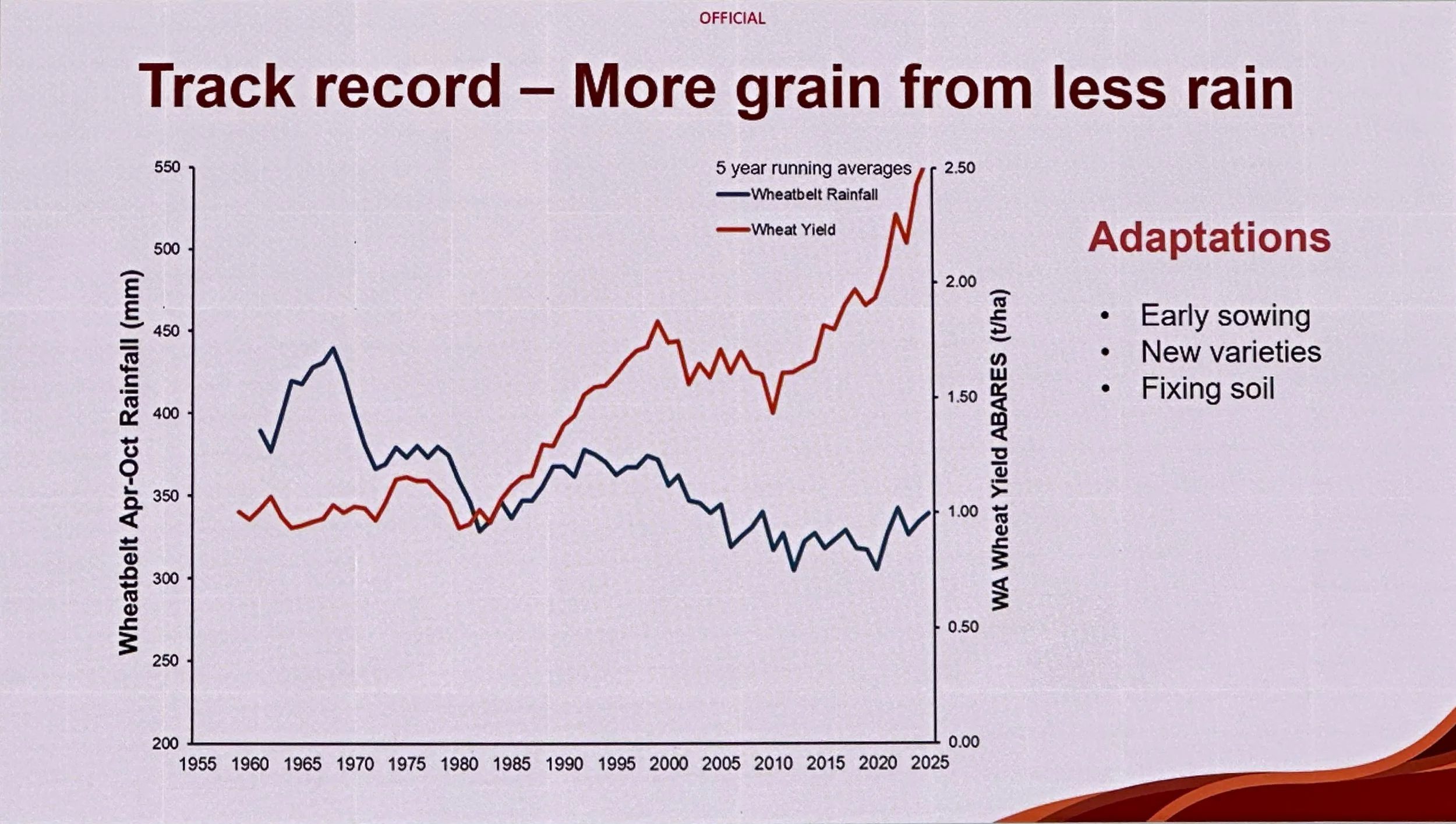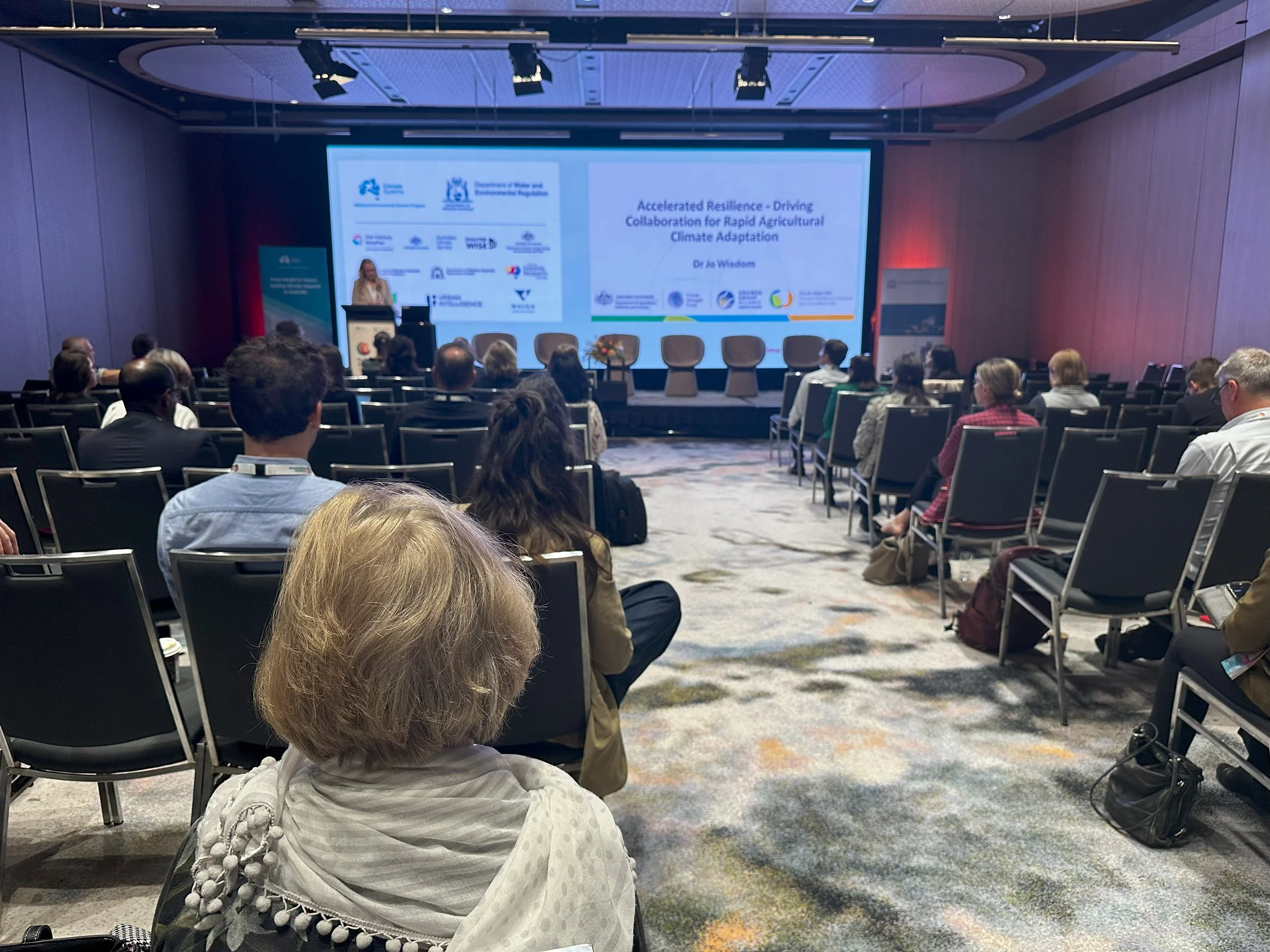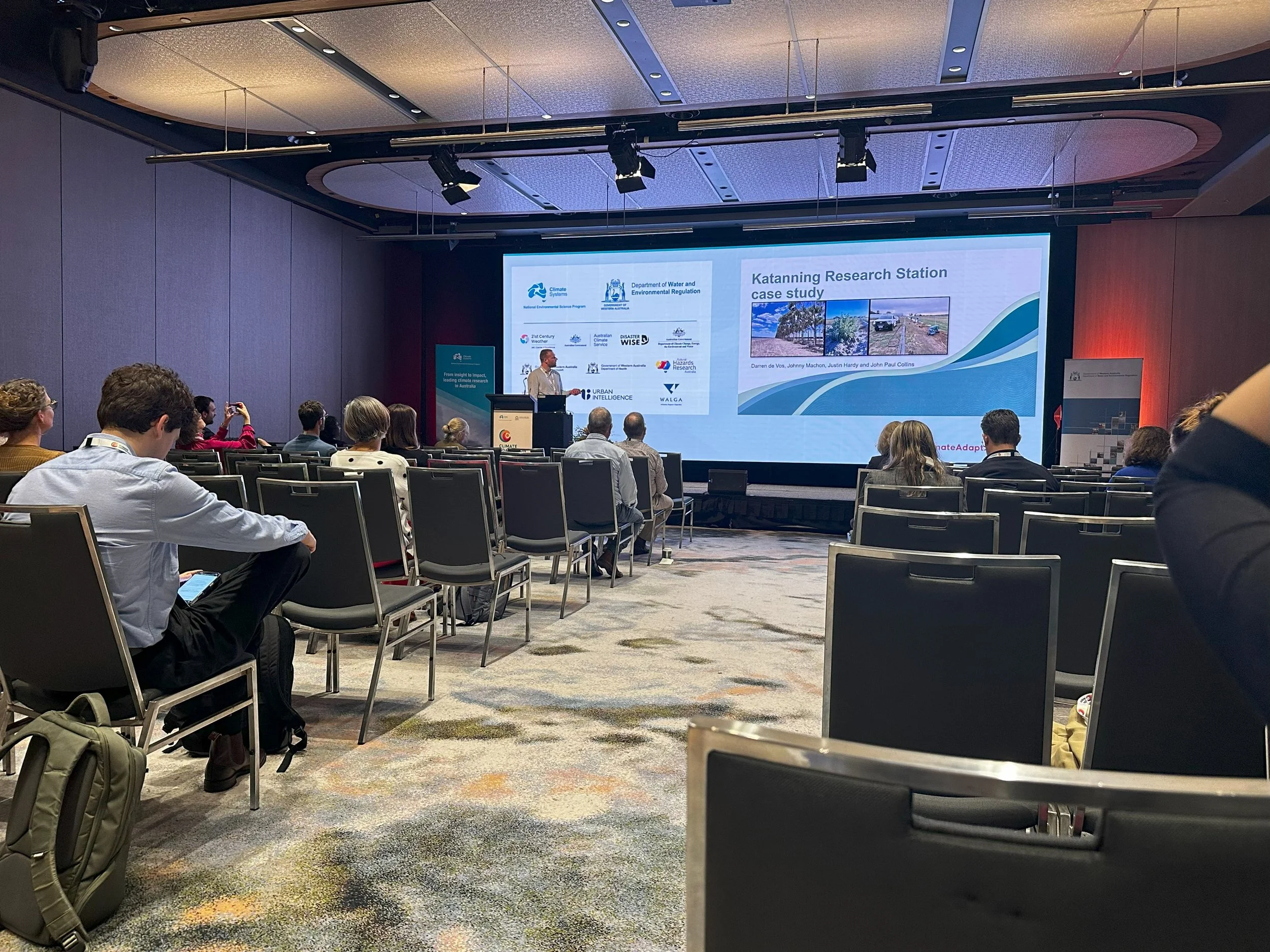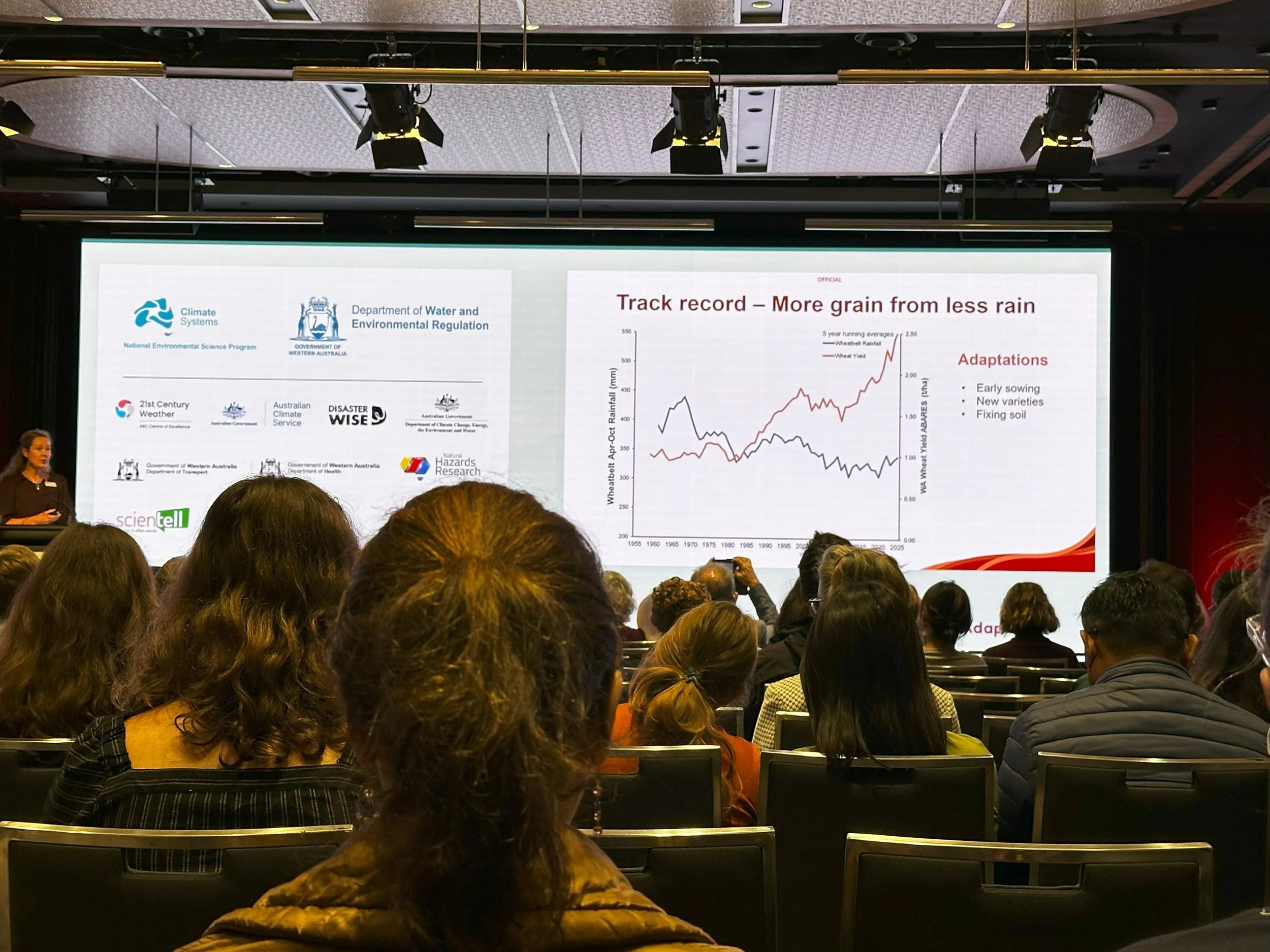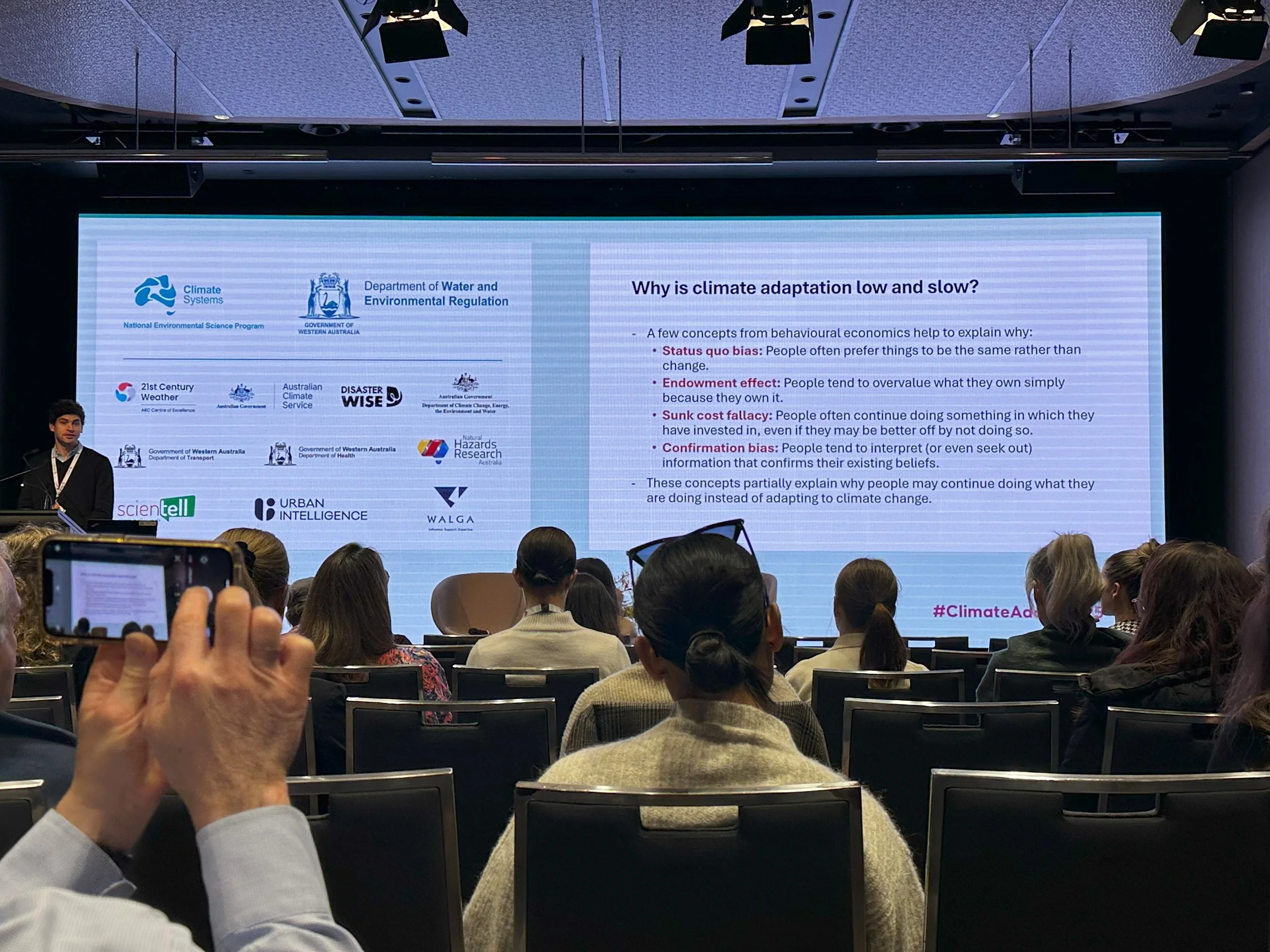Recap: Climate Adaptation Conference 2025
Excerpt of Successful adaptation- WA farmers produce more grain from less rain by Jackie Bucat
Experts at the Climate Adaptation Conference 2025 confirmed we’ve surpassed the 1.5°C global warming limit, with 2024 the hottest year on record. However, with cooperation and innovation, the Wheatbelt community can continue to thrive through smart climate adaptation.
Held in Perth in late July, the Climate Adaptation Conference was a sobering reality check on where we are globally in terms of our efforts to hit the 2015 Paris agreement targets of greenhouse gas (GHG) emissions reductions and mitigating post-industrial global temperature increases.
In short, we’ve had an epic failure. In 2024, we shot passed the desirable 1.5°C warming limit for the first time. There’s some undoubtedly complicated science behind this finding, and ultimately, we are interested in what this means for our own backyard.
For the Wheatbelt, climate projections still support the idea that the number of wet years will decline even under the most conservative scenarios and that extreme weather events will become more frequent and more intense.
Despite this difficult future, the conference show-cased some excellent examples of adaptation to these types of climate conditions and gave us some ways forward; some stand out presentations included:
Jackie Bucat presenting “Successful adaptation- WA farmers produce more grain from less rain” demonstrating how WA wheat yields continue to increase despite declining rainfall primarily due to the combination of adopting early sowing and new varieties and fixing soil constraints.
Brendan Foran presenting “Working with the private sector for nature – How do we fund adaptation through engaging with the private sector” shining a light on how climate adaptation at the scale required to halt climate change cannot be funded by government alone but needs to leverage private sector support to “operationalise intent at scale”.
The presentation of the First Nations People’s Statement on Climate Change to the Australian Government.
There was a very extensive and wide-ranging program that can be accessed here (https://www.ivvy.com.au/event/CA2025/program.html).
Furthermore, a small selection of the climate adaptation tools and documents that were presented included:
My Climate View (https://myclimateview.com.au/) for providing Australian farmers with tailored insights into their changing climate
Western Australian Climate Adaptation Strategy (https://www.wa.gov.au/service/environment/environment-information-services/climate-adaptation-strategy)
Adapt Log (https://adapt-log.csiro.au/) for a searchable repository of conservation interventions for climate adaptation and situation reports (sitreps).
Finally, it was made apparent that the collective impact of nature-based solutions such as the living firebreaks project presented by Linda Metz from South-West NRM have huge potential to attract the private investment required to finance climate adaptation at scale. NRM bodies are in a great position to advocate for this type of investment.
And last but not least the results of the National Climate Risk Assessment (NCRA) for agriculture and our sectors have been published in the Australian Governments National Adaptation Plan found at https://www.dcceew.gov.au/climate-change/publications/national-adaptation-plan
Published eNews #407 – October 2025

